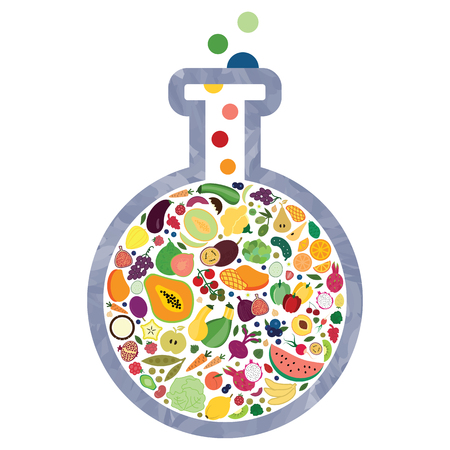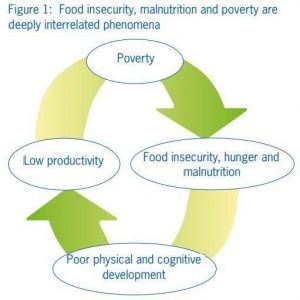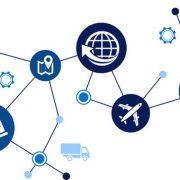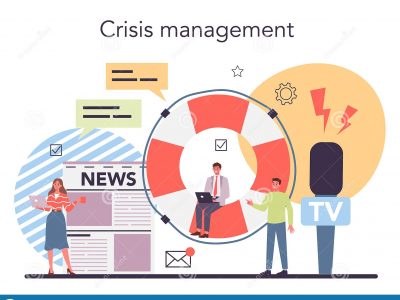Healthy development of the human body during childhood is crucial for maintaining a good healthy lifestyle.
To live and to work, we physically need a well-structured body to generate energy from food and to help in body growth without any negative effects on health. Therefore food must contain nutrients that are useful in body growth and in maintaining good health.
Study on nutrition gives the relationship between health and food [1]. Micronutrient (Required Vitamins and minerals) along with food that contains carbohydrates, fats & proteins provides energy and assists in healthy body development. Inadequate supply of nutrition results in the risk of malnutrition such that its effects were grouped into 3 conditions [2] – Undernutrition, Micronutrient deficiency, Overweight or obesity, and diet-related non-communicable diseases.
1) Risk of Undernutrition-
Undernutrition is the consequence of either an improper diet or a non-availability of potential nutrients. This can occur due to some recurrent diseases during childhood which might restrict the intake of food. A poor child and maternal care system or poverty could also be the reasons for this outcome. Undernutrition risk screening helps to identify the nutritional risk amongst individuals.
Effects of Undernutrition
- Stunting is having less height according to age.
- Wasting is a condition where the weight is less according to height.
- Underweight is low weight for age, maybe stunted or wasted or both [2].
2) Deficiency of Macronutrients-
- Vitamins like A, B, C, D, E, K are helpful in cognitive, physical development, wound healing, and immune system growth. Some of the notable effects due to vitamins are blindness, pellagra, scurvy, rickets, etc.
- Minerals like Iron, Calcium, Iodine, Potassium, Zinc, etc. are very much essential. Iron deficiency known as anemia is seen mostly in women and adolescent girls and it has been contributing to lower economic development significantly and it was estimated up to 2% of GDP in some countries [8].
- Calcium deficiency causes less strength in muscles, bones, nerves, low Iodine causes goiter, zinc, and potassium effects on the immune system.
3) Obesity & Diet-related non-communicable diseases-
Most of the food contains carbohydrates, proteins, fibers, fats that give us energy. An optimum amount of food is healthy. Less food or more food affects body growth leading to diet risk factors amongst individuals.
- Carbohydrates deficiency causes weakness and less energy in the body. While its excess increases the risk of diabetes.
- Protein deficiency affects growth and physical structure while its excess would disturb the metabolic activities and risks the other vital organs.
- Fats insufficiency affects metabolic activities and its excess results in Obesity when you don’t do physical work to burn the fats.
- Other diet risk factors include high or low blood pressure, heart diseases are caused by one or a combination of the
Effects of Malnutrition
- The cognitive potential and IQ levels of the person decrease, challenging the normal survival rate.
- Risk to the immunity system and vulnerability to illness reducing the average life.
- Impact on mortality rate, infertility issues, and birth rates.
- Weakness in the physical structure of the body, a risk to work actively, and resistance to physical damages. That lowers productivity, income sources, social development, and impact on the economy of the country.
The fact sheets by the World Health Organization on malnutrition found that around 45% of children less than 5 years of age reported deaths linked to undernutrition, which mostly occur in low and middle-income countries with rising obesity rates in childhood [2].
In 2014, around 1.9 billion adults were obese and 462 million are underweight. It also says that in the year 2020 around the world, 140 million children under 5 were stunted and 45 million were wasted [2].
This malnutrition problem is seen in almost every country more or less creating challenges in global health conditions. It is one of the world’s greatest global health challenges. Therefore, quantitative and qualitative food with affordable access and food with nutrition is an alarming global challenge as food security with nutrition is a basic human right.
International organizations like World Health Organisation (WHO), World Food Programme (WFP), were concerned and monitoring the food security policy implementations and results. The Food and Agriculture Organization of the United Nations (FAO) explains that food security has four characteristics that must be catered simultaneously: the availability and accessibility of food physically and economically along with its utilization by the body and maintain the stability of the above three characteristics [9]. Food security becomes strongly linked to water, sanitation, and hygiene (WASH) such that the Lack of access to safe drinking water, sanitation, and hygiene can lead to infectious diseases like diarrhea, and other intestinal diseases that can significantly affect the person’s ability to absorb the necessary nutrients [10].
The World Health Organization (WHO) has also stated that malnutrition due to lack of micronutrients increases global challenges in diseases substantially and adds physiological impairments that lead to a reduction in resistance to infections and delayed or impaired growth in victims [11].
It contributes to challenges in economic development by the effect of either one type or more than one type of malnutrition that includes undernutrition risks and obesity too. It affects anyone in the country, but the most vulnerable are children, women, and infants due to the poverty, social, and gender inequalities, and it is more prevalent in developing countries.
Poverty escalates the consequences of malnutrition, that is, people who are below or just above the poverty line are more likely to suffer from malnutrition. Also, malnutrition increases health care expenses, diminishes productivity, and slows down economic growth. All of this combined can perpetuate a cycle of poverty and ill-health [2].
Households dealing with Gender discrimination and poverty find it difficult to access sufficient food for every member of the family!
Low-income groups (due to unemployment, less wages, and a wide education gap) are vulnerable to food insecurity, and inadequate health care facilities [4]. A lower purchasing power of these people makes them prone to choose a less nutrient meal and sometimes less quantity of the food as well [4]. These households spend the majority of their income on the food itself and face risks spending on health facilities and living conditions. Poverty at the maternal stage affects both women and children. A low level of nutrition supply at this crucial stage causes restrictions in healthy fetus growth, sometimes infant deaths, and if the child survives, stuns [12].
Poverty creates a cycle of undernutrition. It often starts with low nutrition and health conditions, especially in early childhood, then the stunted girls grew up becoming stunted mothers leading to give low-birth-weight infants mostly, and again the poverty continues in child care with low nutrition to both the mother and child and it continues [13]. Further, maternal overweight and obesity can increase the risk of the child becoming obese and developing non-communicable diseases later in life [12].
Source: 5. Food and Agriculture Organization of the United Nations. Food security information for action practical guides: an introduction to the basic concepts of food security.
Factors affecting the Global food Supply
- Population growth demanded more food within a short period contributing to alternatives to natural processes by developing processed food with high in energy, free sugars, fats, salts that were being marketed, such that people started compromising spending sometimes on fruits, vegetables, and healthy fibers based on the affordability that attracts the processed food.
- Climate change creates hurdles at the productive stage and distribution of food either by completely spoiling the crops or by the risk of losing healthy food after production. It also contributes to poverty by decreased income and mounted prices of the food to choose less quality and less quantity food that is available.
- Emergency and crises also cease the food supply and compromised quality. A COVID-19 pandemic, like the worst crises when people under social distancing and failed productivity due to climate like floods, heavy rains will potentially affect food supply to all sections of people, moreover quality with nutrition is another big challenge. Especially the poor people with very low income were at risk of losing employment and wealth which ceases the access to food, even the food is available. When it comes to middle-income groups, quality is the biggest question where the markets don’t have enough nutrient-rich foods and consume low quality food leading to diseases and weakness as long
Conclusion
The Indian government’s initiatives and awareness programs have helped provide nutrient-rich food to women during pregnancy, and even after childbirth up to certain age by Anganwadi schemes. More importance has been given to proper food supply chain management to meet growing consumer demand for products that are safe, of high quality, sustainably produced, and of assured provenance. Even the accessibility of food grains through the public distribution system for the marginal sections is bridging the gap between health and malnutrition.
The government has focused on minimizing the risk of losing young children’s health by initiating free mid-day meals at schools so that it encourages education with food security. It has also brought policies adhering to the international resolutions like National Food Security Mission, Rashtriya Krishi Vikas Yojana (RKVY), the Integrated Schemes on Oilseeds, Pulses, Palm oil and Maize (ISOPOM) and, Pradhan Mantri Fasal Bima Yojana.
Therefore the National Food Security Act (NFSA), 2013, aims to ensure food and nutrition for the vulnerable people through the associated schemes and programs as mentioned above [7], etc., all these above schemes contribute to some of the seventeen United Nations Sustainable Development goals on achieving No poverty, Zero Hunger, Good Health and Well-Being, Gender Equality, Clean Water and Sanitation, Reduced Inequality, Responsible Consumption and Production [15].
References
[1] eatright.org. Academy of Nutrition and Dietetics, “How to Explain Basic Nutrition Concepts,” [Online]. Available: https://www.eatrightpro.org/practice/practice-resources/international-nutrition-pilot-project/how-to-explain-basic-nutrition-concepts. [Accessed 26 July 2021].
[2] World Health Organization, “Malnutrition,” [Online]. Available: https://www.who.int/news-room/fact-sheets/detail/malnutrition. [Accessed 26 July 2021].
[3] UN India – the United Nations, “Nutrition And Food Security,” [Online]. Available: https://in.one.un.org/un-priority-areas-in-india/nutrition-and-food-security/. [Accessed 27 Jully 2021].
[4] World Health Organization, “Healthy diet,” [Online]. Available: https://www.who.int/news-room/fact-sheets/detail/healthy-diet. [Accessed 26 July 2021].
[5] T. Newman, “What is nutrition, and why does it matter?” medical news today, 9 January 2020. [Online]. Available: https://www.medicalnewstoday.com/articles/160774.
[6] Mayo Clinic, “Senior health: How to prevent and detect malnutrition,” Mayo Clinic, [Online]. Available: https://www.mayoclinic.org/healthy-lifestyle/caregivers/in-depth/senior-health/art-20044699. [Accessed 26 July 2021].
[7] Unite For Sight, “Module 5: Social Determinants of Malnutrition,” Unite For Sight, [Online]. Available: http://www.uniteforsight.org/nutrition/module5. [Accessed 26 July 2021].
[8] The Micronutrient Initiative. (2004) Vitamin and Mineral Deficiency: a global progress report.
[9] Food and Agriculture Organization of the United Nations. Food security information for action practical guides: an introduction to the basic concepts of food security. FAO. 2008. http://www.fao.org/docrep/013/al936e/al936e00.pdf. Accessed 28 Jul 2021.
[10] Ahiadeke C. Breastfeeding, diarrhea, and sanitation as components of infant and child health: a study of large scale survey data from Ghana and Nigeria. J Biosoc Sci. 2000;32(1):47–61.)
[11] Tulchinsky TH. Micronutrient deficiency conditions: global health issues. Public Health Rev. 2010;32:243–55.)
[12] Black RE. Maternal and child undernutrition and overweight in low-income and middle-income countries. Lancet. 2013;382:427–51.
[13] Food and Agriculture Organization of the United Nations. The state of food and agriculture: social protection and agriculture: breaking the cycle of rural poverty. FAO. 2015. http://www.fao.org/3/a-i4910e.pdf. Accessed 10 Feb 2017.
[14] Ayala, A., Meier, B.M. A human rights approach to the health implications of food and nutrition insecurity. Public Health Rev 38, 10 (2017).
https://doi.org/10.1186/s40985-017-0056-5
[15] United Nations Department of Economic and Social Affairs, “#Envision2030: 17 goals to transform the world for persons with disabilities,” [Online]. Available: https://www.un.org/development/desa/disabilities/envision2030.html. [Accessed 30 July 2021].
Blog Published by: Sai Teja, Student Risk Committee Member










